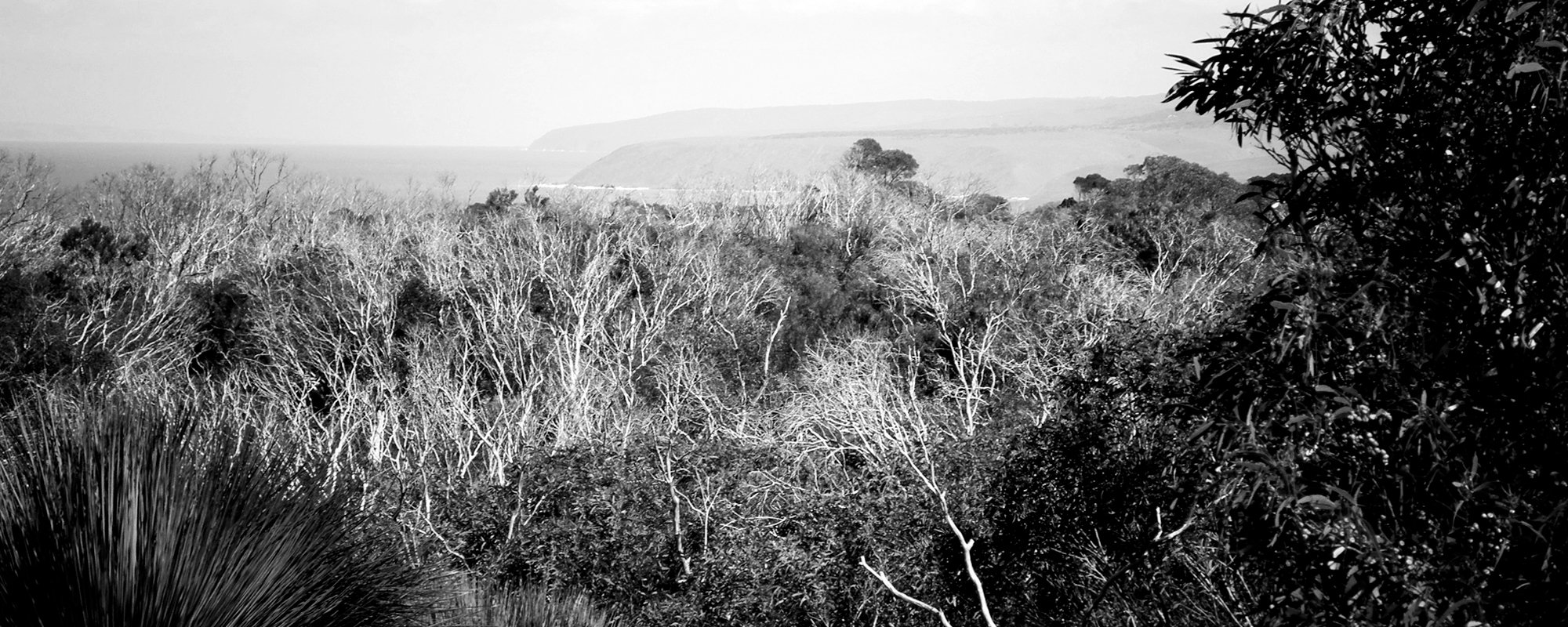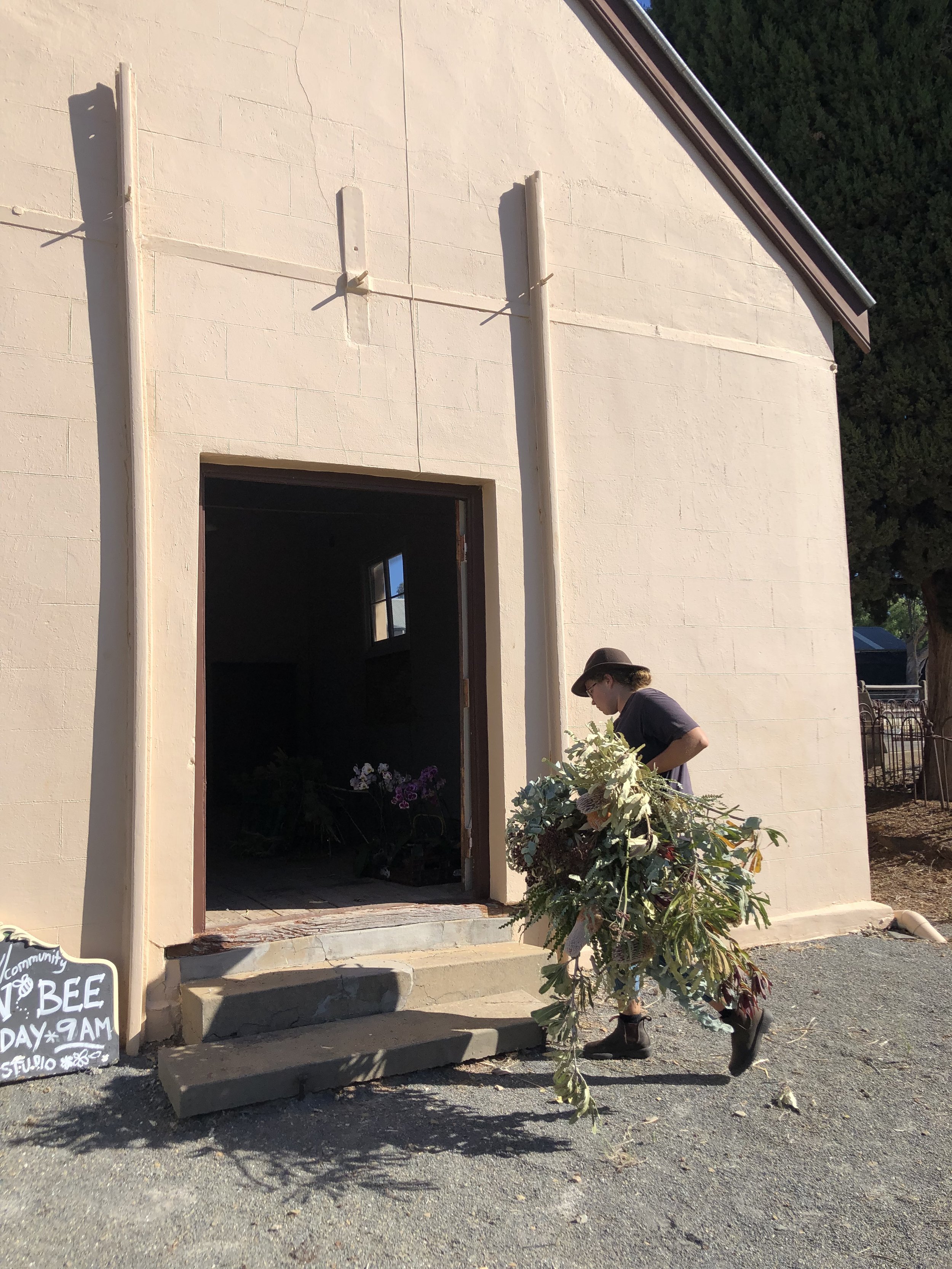We are a holistic studio that adheres to 4th pillar sustainability principles in all we do, for a flourishing local environment, economy, community & culture. We are working towards a zero carbon footprint (supported by our project to transform the cemetery & studio grounds) & are engaged locally with Lot 50-Kanyanyapilla on bi-cultural ecological & cultural regeneration.
Hope Lovelock Deane, Founder, Director & Curator
Harvest Studio, The Botanical Cemetery & The Culture Garden
(Photo credit: Jonathon VDK)
Hope Lovelock Deane (MAVA) has a 30 year background in contemporary visual art, arts management, events, & placemaking, & enjoys working collaboratively & holistically across disciplines towards the greater good. Hope’s work has focused on reconnecting people with the wonders of the natural world, for over 30 years.
Hope is the Founder & Creative Director of Harvest Studio (2017), a botanical studio specialising in creating immersive experiences by transforming spaces with locally farmed & foraged materials. Their work is all about connection; between people, place & the natural landscape around us.
Harvest Studio creates nature sculptures, site-specific installation artworks & immersive landscape experiences, and poetic (often spatial) event responses. Working across installation art, public art, garden interventions, interior design, event design & floristry, Hope & her team create wild beauty with plants, botanicals (fresh & dried) & mixed-media elements. Everything created is one-of-a-kind, seasonally materials-led & conceptually driven (including being responsive to context/ resources, as well as place/ site if spatial).
Harvest Studio adheres to a holistic quadruple bottom-line, with flourishing cultural, environmental, social & economic contributions as their intention.
Hope is committed to creating & strengthening a local visual botanical language, that speaks “of here”, fostering relationships between locals, visitors, growers, artists & the environment.
Housed in the first church in McLaren Vale (1843-44), the studio also offers workshops, site-tours & collaborative events, as well as materials, botanicals to order and ready-to-go flowers for sale. Their State Heritage site includes The Botanical Cemetery (active) & The Culture Garden, a placemaking & community garden initiative, transforming their public place into a more welcoming and garden-like world, with plantings linking people to the multi-cultural history of the area.
Hope is the cemetery (originally the Congregational Cemetery, 1841) & community garden (est. 2022) Curator, with family connections to her site going back 8 generations. Hope Lovelock Deane & Ruby Deane Jones (Studio Manager), are a Mother/daughter team, committed to regenerating & activating their State Heritage place in the centre of McLaren Vale. Youngest daughter Violet, operates the studio storefront on Saturdays…
Let us tell you a story, of a local girl…
Harvest Studio resides in the Pioneer Chapel (initially called The House of the Lord), a State Heritage place & the first church in McLaren Vale. Built in 1843-44 with a thatched roof, it originally housed services for 5 denominations. Prior to the chapel, “Church” was held under a gumtree on Kangarilla Road, later the Uniting Church ran services from the larger Congregational Church on Main Road, built 17 years after this chapel. Our chapel was used as a Sunday School & Church Hall after that time, until purchased (with the cemetery) by Studio Founder & Director Hope Lovelock Deane in November 2021 (after practising as a visual artist for 30 years; 5 of them as Harvest Studio).
Hope has numerous family connections with the Chapel, the cemetery, this site in the town & the neighbouring villages, going back 7 & 8 generations (respectively) of her Mother’s & Father’s families.
Hope & her children (one of whom works at the studio), have family buried in the cemetery, on both sides of the family, including: going back to the 8th paternal generation (the longest serving Minister of the Chapel, Rev. Howie & his family & descendants) & the 7th maternal generation (one of the first families of Cornish settlers in the area & one of the earliest graves, for Sarah & later, Abraham Pethick).
Strangely enough the studio logo, a thistle engraved in a glass button, chosen years before moving to this site, was taken from a Pethick belonging, passed down to Hope in her Great Aunt’s sewing kit, likely belonging to Hope’s Great Grandmother Amy (who ran a birthing hospital in Whites Valley just outside of Willunga, where many locals were born). So now Harvest Studio, with its Pethick logo, sits alongside the graves of the first Pethicks that came over the seas to the area, from whom Hope descended; one of the first families to farm this area.
And this humble first church had its foundation stone laid at a Harvest Thanksgiving service, under an old gum tree on Kangarilla Road, where church was held before this chapel was built. And now Harvest Studio is the caretaker & curator of this site. And a piece of farming equipment was donated by Hope’s Dad, from his side of the family stretching 8 generations back, who worked in relation to the land, & forms the under-structure out front for the studio botanical displays.
When Hope first looked at the old church as a potential studio site it was still set up as a church and as she entered she mentioned she had family in the cemetery (at that stage the only ones she remembered were the Semmens, Hope’s Great Nana hilda’s side of the family; Hilda lived around the corner from Ellis Park when Hope grew up in the town). Lo & behold there was one gravestone, an unusual wooden one, resting at the front of the church as she entered (it had fallen down), &, of all the people it might be, it was a Semmens. The church member said that if that wasn’t a sign that Hope was to become the caretaker of this building and cemetery, then he didn’t know what was!
And as Hope & her family placed the Harvest Studio slate sign in the ground when moving in, Hope looked across to the corner, to the (now cleared) block where the Deane/ McDonald/ Morton/ Semmens/ Hutchinson (to name a few) side of the family lived and ran their family business for three generations. Her Dad grew up there and attended Sunday school in this building, with Hope’s Grandma’s sister a teacher – the turquoise Sunday school chairs have been kept & her Great Aunt had her teaching chair all this time & has now returned it back to the space where it hangs on the wall). Hope’s Dad and his sister went to school on the other side of this corner, in what is now the RSL building.
As Hope describes, “I spent a lot of time across the road at that family property growing up, with my Great Grandmother Elsie (who I named my studio van after, again before I knew we would move to this site); drinking up her garden & her incredible textile skills, alongside my Grandparents who taught me how to garden & cook. I also used to sit in the McLaren Vale Transport office with my Mum & Grandma & stamp the envelopes & play with the adding machine…or roam around in the sheds looking for old & interesting things.”
“Again, strangely, I reflected that my Mum went into labour with me whilst working across the road at the family business, then walked next door to the hospital to give birth to me. So I began to arrive in this world on the other side of this corner, now work here with one of my daughters, opposite where my Dad’s family were for 3 generations, caretaking graves from both sides of my family, across many generations & I plan to lay myself to rest here in this cemetery alongside family, starting & finishing my life at this corner of a town, and an area, where my children & I are connected to over 30 settler families.”
Ruby Deane Jones,
Manager, Harvest Studio




